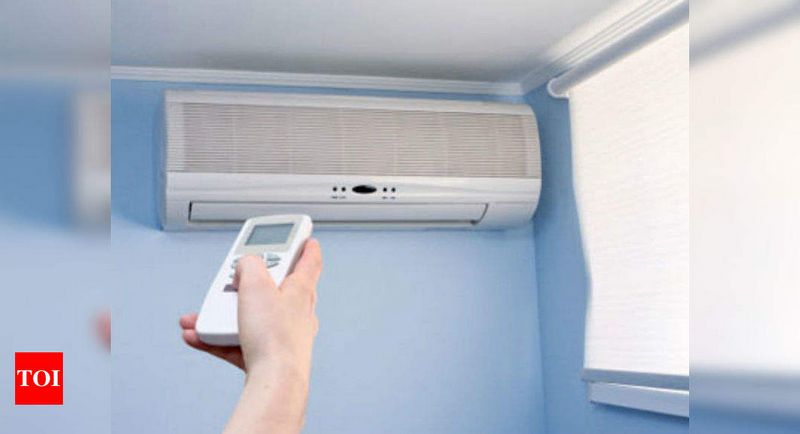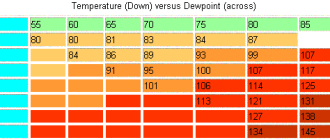
Is it OK to keep AC at 26 degrees?
When it comes to setting the temperature on your AC, there are many factors to consider. One of the most important is energy-efficiency. It’s no secret that cooling a space requires a significant amount of energy, and running your AC at a lower temperature can increase your energy consumption.
That being said, 26 degrees Fahrenheit is quite cool, and may not be necessary for everyone. It’s important to find a temperature that is comfortable for you, while still being mindful of energy usage. Some people may find 26 degrees Fahrenheit to be too cold, while others may find it just right.
Keeping your AC at 26 degrees Fahrenheit can be OK, as long as you are mindful of your energy usage and comfortable at that temperature. It’s important to find a balance that works for you and your lifestyle. If you’re unsure, it may be worth experimenting with different temperatures to see what works best for you.
Ultimately, the decision of what temperature to keep your AC at is a personal one. Just remember to be mindful of both your comfort and energy-efficiency, and you should be able to find a temperature that is both comfortable and environmentally friendly.
Understanding the Optimal AC Temperature
Many people wonder what is the optimal temperature to keep their air conditioning (AC) at. While individual preferences may vary, experts generally agree that setting the AC temperature around 26 degrees Fahrenheit (approximately 18 degrees Celsius) is fine for most situations.
Energy-efficiency is an important factor to consider when deciding on the AC temperature. Lowering the temperature too much can lead to increased energy consumption and higher utility bills. By keeping the AC temperature around 26 degrees Fahrenheit, you can strike a balance between staying comfortable and conserving energy.
It is also important to note that what feels comfortable for one person may not be the same for another. Factors such as humidity, clothing, and personal preferences can affect how temperature is perceived. Therefore, it’s ok to adjust the AC temperature slightly to find the most comfortable setting for you.
By understanding the optimal AC temperature and making adjustments based on your personal comfort and energy-efficiency preferences, you can ensure a comfortable and cost-effective cooling experience in your home or office.
Benefits of Setting the AC Temperature at 26 Degrees Fahrenheit
Setting the AC temperature at 26 degrees Fahrenheit can offer several benefits in terms of energy-efficiency and comfort. While some people may consider this temperature too low, it can actually be a fine option depending on individual preferences.
One of the main benefits of setting the AC temperature at 26 degrees Fahrenheit is improved energy-efficiency. By keeping the temperature relatively low, the AC unit will not have to work as hard to cool the space. This can result in lower energy consumption and reduced electricity bills.
A temperature of 26 degrees Fahrenheit can also provide a comfortable indoor environment. While this temperature might be considered cool for some individuals, others may find it perfect for their needs. It is important to note that personal comfort can vary, and it is advisable to adjust the AC temperature according to individual preferences.
| Energy-efficiency | Lower temperature can reduce AC energy consumption |
| Comfort | Some individuals may find 26 degrees Fahrenheit to be comfortable |
In conclusion, keeping the AC temperature at 26 degrees Fahrenheit can offer benefits in terms of energy-efficiency and personal comfort. While individual preferences may vary, setting the AC temperature at this level can help save energy and create a comfortable indoor environment.
Potential Drawbacks of Keeping the AC Temperature at 26 Degrees Fahrenheit
While setting the AC temperature at 26 degrees Fahrenheit may seem comfortable and cool, there are a few potential drawbacks to consider:
- Energy Efficiency: Keeping the AC temperature at such a low level can result in higher energy consumption. The AC unit would have to work harder to maintain the desired temperature, leading to increased energy bills.
- Health Concerns: Extremely low temperatures can cause discomfort and lead to health issues, such as colds or respiratory problems. It can also contribute to dry skin and irritation.
- Environmental Impact: Higher energy consumption means a greater carbon footprint. Cooling a space to such a low temperature contributes to greenhouse gas emissions and contributes to climate change.
- Inconsistent Cooling: Setting the AC temperature at 26 degrees Fahrenheit may cause the room to feel excessively cold in some areas and not well-distributed. This can result in certain areas being uncomfortably cold while others are not adequately cooled.
While it may be tempting to keep the AC temperature at 26 degrees Fahrenheit for the sake of personal comfort, it is important to consider the potential drawbacks mentioned above. Finding a balance between comfort and energy efficiency is crucial for a more sustainable and comfortable living environment.
Factors to Consider when Deciding on the AC Temperature
When it comes to maintaining a comfortable indoor environment, the temperature at which you set your AC plays a crucial role. While a cool and refreshing atmosphere is always desirable, finding the right temperature can be a bit tricky. Here are some factors to consider when deciding on the AC temperature:
1. Energy-efficiency: Keeping the AC temperature at a moderate level can help conserve energy and lower your electricity bills. Setting the temperature too low, like 26 degrees Fahrenheit, can result in excessive energy consumption, especially in hot climates.
2. Comfort: Everyone has their own preferences when it comes to indoor temperature. Some may find 26 degrees Fahrenheit to be too chilly, while others might find it perfectly fine. It’s essential to strike a balance between comfort and energy efficiency.
3. Health considerations: Extreme temperatures, whether too hot or too cold, can have an impact on your health. Setting the temperature too low can lead to issues like dry skin and respiratory problems. It’s important to find a temperature that keeps you comfortable without compromising your well-being.
4. Seasonal changes: The optimal AC temperature may vary depending on the season. During the summer, a lower temperature may be more suitable to combat the heat, while during the winter, a slightly higher temperature may be needed for warmth and comfort.
Ultimately, the decision on the AC temperature should be based on personal preferences, energy-efficiency goals, and comfort levels. It’s important to find a temperature that strikes a balance between staying cool and maintaining a comfortable indoor environment.
The Impact of Room Size on AC Temperature
When it comes to setting the temperature on your AC, the size of the room can have a significant impact on the level of comfort you experience. While keeping the AC temperature at 26 degrees Fahrenheit may be fine in some situations, it may not be suitable for all room sizes.
AC systems are designed to cool a certain volume of air within a specific temperature range. In smaller rooms, a higher AC temperature of 26 degrees Fahrenheit may be sufficient to keep the space cool and comfortable. However, in larger rooms, such as living rooms or open floor plans, a temperature of 26 degrees Fahrenheit may not provide the desired level of coolness.
In larger rooms, the cold air from the AC may have a harder time evenly distributing throughout the space. This can result in areas of the room feeling warmer or cooler than others, leading to discomfort. To achieve a more uniform cooling effect in larger rooms, it may be necessary to lower the AC temperature to a level between 22-24 degrees Fahrenheit.
It’s important to find a balance between keeping your room cool and conserving energy. While setting the AC temperature lower may provide a more comfortable environment, it can also increase energy consumption and lead to higher utility bills. Experiment with different temperature settings to find the right balance for your room size and personal preferences.
In conclusion, while keeping the AC temperature at 26 degrees Fahrenheit may be fine for smaller rooms, it may not provide the desired level of coolness in larger rooms. Understanding the impact of room size on AC temperature can help you find the perfect balance between comfort and energy savings.
Humidity Levels and AC Temperature
When it comes to setting the AC temperature, it’s important to consider the humidity levels in your environment. While 26 degrees Fahrenheit may be comfortable in terms of coolness, it may not be the most energy-efficient or ideal option in terms of humidity control.
Humidity refers to the amount of moisture in the air, and it can greatly affect how we perceive temperature. High humidity levels can make us feel hotter and more uncomfortable, even if the actual temperature is relatively low.
For most people, a comfortable humidity level is between 30% and 50%. To achieve this, it’s recommended to set the AC temperature between 22-24 degrees Fahrenheit. This range not only helps in maintaining a comfortable environment but also ensures better energy efficiency.
While setting the AC temperature at 26 degrees Fahrenheit may be fine if your humidity levels are well-controlled, it’s important to monitor and adjust accordingly. If you notice higher humidity levels or a feeling of discomfort, lowering the temperature or using additional methods to control humidity, such as dehumidifiers or ventilation, may be necessary.
So, while it’s okay to keep the AC temperature at 26 degrees Fahrenheit, especially if you feel comfortable, it’s important to consider the effect it may have on humidity levels and overall energy efficiency. Finding the right balance between comfort and energy efficiency is key to creating a pleasant and sustainable environment.
Energy Efficiency and AC Temperature
In terms of energy efficiency, setting the AC temperature to 26 degrees Fahrenheit may not be the most optimal choice. While keeping the temperature cooler can help in providing a comfortable environment, it can also consume a significant amount of energy.
Generally, energy experts recommend setting the AC temperature between 24 and 26 degrees Celsius (75 and 78 degrees Fahrenheit) for optimal energy efficiency. This range ensures a balance between keeping the space cool and minimizing energy usage.
While it is fine to keep the AC temperature at 26 degrees Fahrenheit if you are comfortable, it is worth noting that every degree cooler can increase energy consumption by around 3-5%. So, if energy efficiency is a concern for you, it may be worth considering setting the temperature a bit higher to save on energy costs.
However, personal comfort should also be a factor in determining the AC temperature. If you feel comfortable at 26 degrees Fahrenheit and do not mind the possible increase in energy usage, then it is okay to keep the temperature at that level. Remember, finding the right balance between comfort and energy-efficiency is key in making the most optimal temperature choice for your AC.
Optimizing Comfort Levels with the Right AC Temperature
If you want to stay cool during the hot summer months, it’s important to find the right AC temperature for your home. While personal preferences can vary, most people find a temperature between 72-78 degrees Fahrenheit (22-26 degrees Celsius) to be the most comfortable. This range allows for efficient cooling while still providing a cool and refreshing environment.
Setting your AC temperature at 26 degrees Fahrenheit (about -3 degrees Celsius) may be too cold for most people. This temperature is often reserved for freezing or refrigeration purposes and may not be suitable or comfortable for everyday living. Additionally, keeping your AC at such a low temperature can lead to higher energy usage and increased cooling costs.
It’s important to find a balance between comfort and energy-efficiency when setting your AC temperature. Keeping it between 72-78 degrees Fahrenheit (22-26 degrees Celsius) is generally considered a fine range that optimizes both comfort and energy savings.
Remember that individual preferences can vary, and some people may prefer slightly cooler or warmer temperatures. Experiment with different settings to find what works best for you and your household. Keep in mind that adjusting your AC temperature even a few degrees can have a significant impact on energy consumption and cost.
Ultimately, the goal is to find a temperature that keeps you comfortable while also being mindful of energy usage. By optimizing your AC temperature, you can create a cool and comfortable environment while also being energy-efficient.
Health and Well-being Considerations at 26 Degrees Fahrenheit
When it comes to setting the temperature of your AC unit, finding the right balance between energy-efficiency and comfort is important. While 26 degrees Fahrenheit may seem cool, it is generally considered to be within a comfortable range for most people.
The American Society of Heating, Refrigerating and Air-Conditioning Engineers (ASHRAE) recommends a temperature range of 68 to 74 degrees Fahrenheit for occupied spaces. Keeping the AC temperature at 26 degrees Fahrenheit falls within this range and is generally considered to be fine for maintaining a comfortable indoor environment.
However, it is important to note that individual preferences for temperature can vary. Some people may find 26 degrees Fahrenheit to be too cold, while others may find it just right. It is important to take into consideration the specific needs and comfort levels of the people in the space when determining the AC temperature.
In terms of health and well-being, keeping the AC temperature at 26 degrees Fahrenheit can have some benefits. A cooler indoor environment can help to promote better sleep, as it can create a more comfortable sleeping environment. Cooler temperatures can also help to reduce the growth of mold and mildew, which thrive in warm and humid conditions.
However, it is important to ensure that the AC unit is properly maintained and filters are cleaned regularly to prevent the circulation of allergens and pollutants. Additionally, prolonged exposure to cold temperatures can lead to discomfort and may cause issues such as dry skin and respiratory problems in some individuals.
In conclusion, keeping the AC temperature at 26 degrees Fahrenheit is generally considered to be within a comfortable range for most people. However, individual preferences and specific considerations for health and well-being should be taken into account when setting the temperature. Overall, maintaining a balance between energy-efficiency and comfort is key to creating a healthy and comfortable indoor environment.
Personal Preferences and the AC Temperature
When it comes to setting the AC temperature, personal preferences play a significant role. While energy-efficiency and cost savings are important factors to consider, it’s also essential to find a temperature that keeps you cool and comfortable.
Setting the AC temperature at 26 degrees Fahrenheit may be too cool for some people, while others might find it just right. It’s a matter of personal preference and individual comfort levels. Some individuals prefer a cooler environment, while others may feel more comfortable with a slightly higher temperature.
It’s perfectly fine to keep the AC temperature at 26 degrees Fahrenheit if it suits your personal preferences and provides the desired level of comfort. However, it’s important to consider the energy-efficiency and cost implications of maintaining a lower temperature.
Keep in mind that setting the AC temperature too low can result in increased energy consumption and higher electricity bills. It’s recommended to find a balance between comfort and energy-efficiency by setting the AC temperature at a reasonable level that keeps you cool but doesn’t overwork the cooling system.
In conclusion, choosing the right AC temperature is a personal decision that depends on individual preferences. If 26 degrees Fahrenheit is the temperature at which you feel comfortable and cool, then it’s absolutely fine to keep it at that level. Just be mindful of the energy-efficiency and cost considerations associated with maintaining a lower temperature.
Seasonal Variations in the Optimal AC Temperature
When it comes to keeping cool and comfortable during the summer months, setting the temperature on your AC unit to the optimal level is essential. This not only ensures your comfort, but it also plays a significant role in energy efficiency.
It is generally agreed that keeping the AC temperature at around 26 degrees Fahrenheit (or 78 degrees Celsius) is a suitable choice for many people. However, it’s important to consider that optimal AC temperature can vary depending on the season.
During the hot summer months, when the temperature is high outside, setting the AC temperature at 26 degrees Fahrenheit can help maintain a comfortable indoor environment. However, during milder seasons such as spring or fall, it may be more energy-efficient to slightly increase the AC temperature to around 28-30 degrees Fahrenheit (or 82-86 degrees Celsius).
By adjusting the AC temperature according to the season, you can strike a balance between comfort and energy efficiency. Additionally, using a programmable thermostat can help automate this process, allowing you to set different temperatures for different times of the day.
Remember, keeping your AC temperature at around 26 degrees Fahrenheit is generally okay, but considering the seasonal variations can help optimize energy consumption while still keeping you cool and comfortable.
Expert Opinions on the Optimal AC Temperature
When it comes to setting the AC temperature, opinions vary among experts. However, most agree that a temperature of 26 degrees Fahrenheit is typically fine for a comfortable and cool indoor environment.
One important factor to consider is energy-efficiency. Setting the AC temperature too low can result in higher energy consumption, which not only increases your electricity bill but also contributes to environmental impact. Therefore, keeping the temperature at 26 degrees Fahrenheit can help strike a balance between comfort and energy-efficiency.
It’s worth noting that individual preferences play a significant role in determining the optimal AC temperature. What feels comfortable for one person may be too cold or too warm for another. Therefore, it’s essential to consider personal comfort levels when deciding on the AC temperature.
Ultimately, the goal of setting the AC temperature is to create a comfortable environment while minimizing energy consumption. Keeping the temperature at 26 degrees Fahrenheit is generally considered a good starting point, but it’s important to adjust it according to your specific needs and preferences.
Q&A:
Is it OK to keep the AC temperature at 26 degrees Fahrenheit?
It is not recommended to keep the AC temperature at 26 degrees Fahrenheit. This is an extremely low temperature that can lead to excessive energy consumption and discomfort. It is generally recommended to set the AC temperature between 72-78 degrees Fahrenheit for optimal energy efficiency and comfort.
What is the ideal AC temperature during the summer?
The ideal AC temperature during the summer is typically between 72-78 degrees Fahrenheit. This range provides a good balance between comfort and energy efficiency. Setting the temperature within this range can help cool the room effectively without consuming excessive energy.
Will setting the AC temperature to 26 degrees Fahrenheit make the room cooler faster?
No, setting the AC temperature to 26 degrees Fahrenheit will not make the room cooler faster. The cooling speed of an air conditioner depends on factors such as the cooling capacity of the unit and the insulation of the room. Setting the temperature to an extremely low level will not increase the cooling speed, but it will consume more energy and may result in discomfort due to the excessively cold temperature.
What are the disadvantages of keeping the AC temperature at 26 degrees Fahrenheit?
There are several disadvantages of keeping the AC temperature at 26 degrees Fahrenheit. Firstly, it will significantly increase energy consumption, leading to higher electricity bills. Secondly, it may result in discomfort due to the excessively cold temperature. Additionally, running the AC at such a low temperature can put unnecessary strain on the unit and potentially shorten its lifespan.
Why is it recommended to set the AC temperature between 72-78 degrees Fahrenheit?
It is recommended to set the AC temperature between 72-78 degrees Fahrenheit for several reasons. Firstly, this range provides a comfortable indoor temperature for most individuals. Secondly, setting the temperature within this range helps maintain energy efficiency, as the AC does not have to work excessively to cool the room. Finally, it helps to balance the energy consumption and environmental impact of using an air conditioner.
Can I keep the AC temperature at 26 degrees Fahrenheit?
Yes, you can keep the AC temperature at 26 degrees Fahrenheit if that is comfortable for you. However, it is important to note that most people find this temperature to be quite chilly and may prefer a higher temperature setting.
Is it energy efficient to keep the AC temperature at 26 degrees Fahrenheit?
No, keeping the AC temperature at 26 degrees Fahrenheit is not considered energy efficient. The lower the temperature setting on your AC, the more energy it will consume to maintain that temperature. It is recommended to set your AC temperature at a slightly higher level, around 72-78 degrees Fahrenheit, to save on energy costs.






